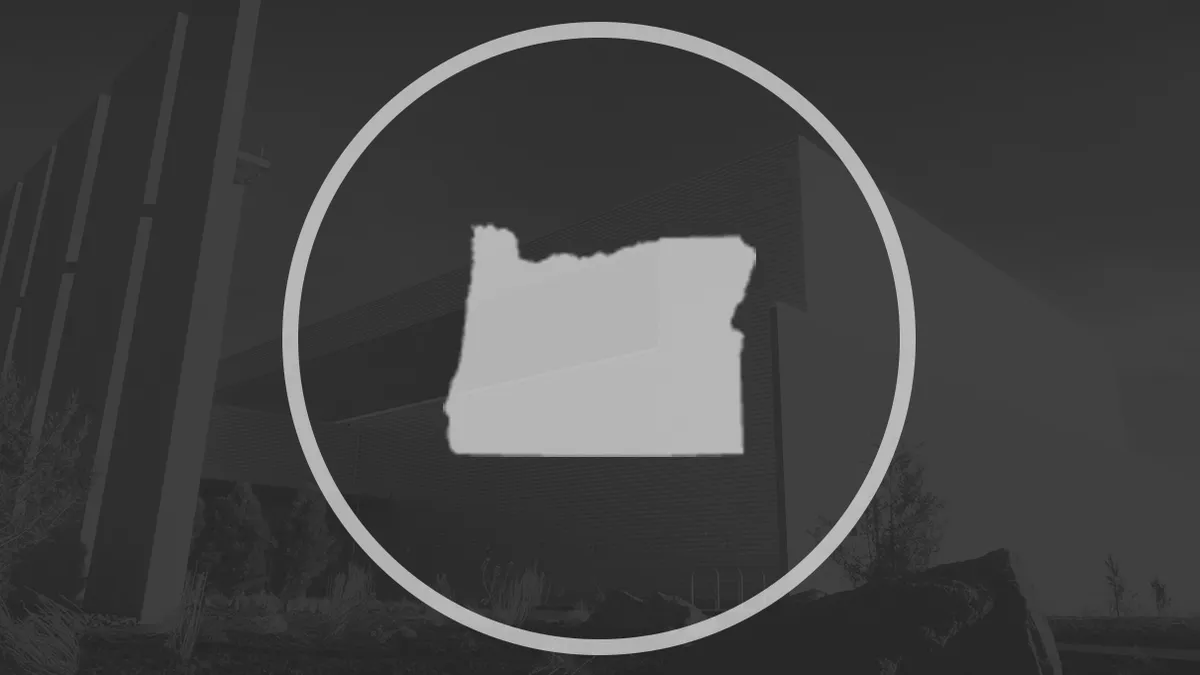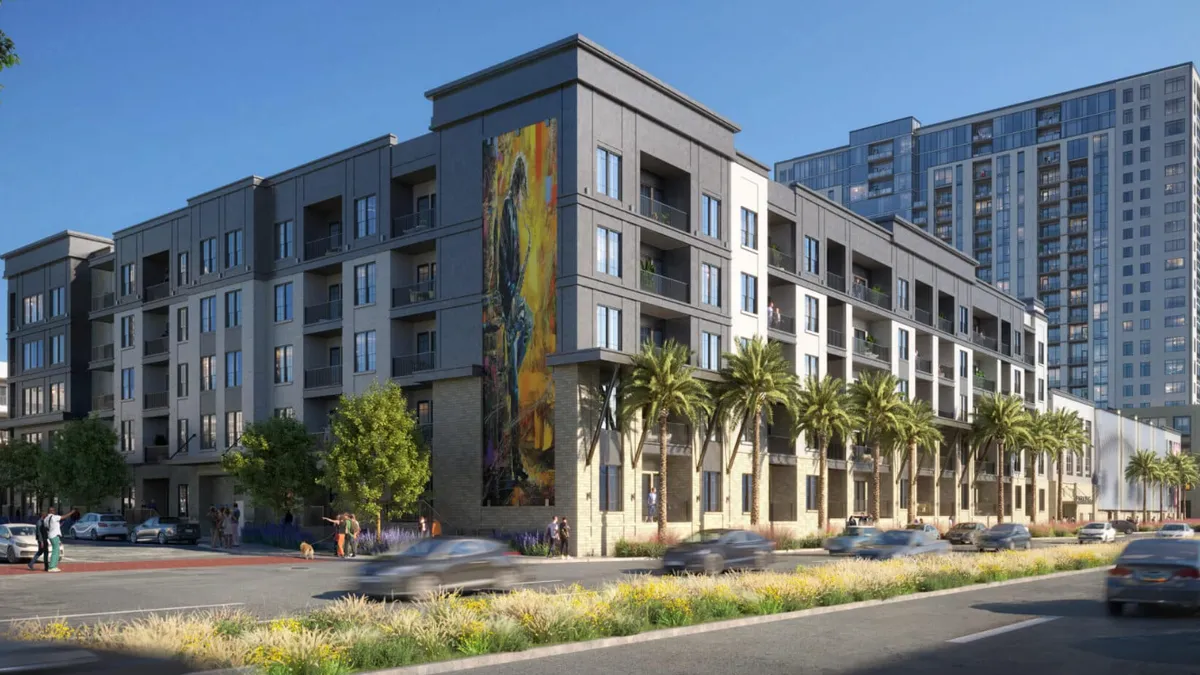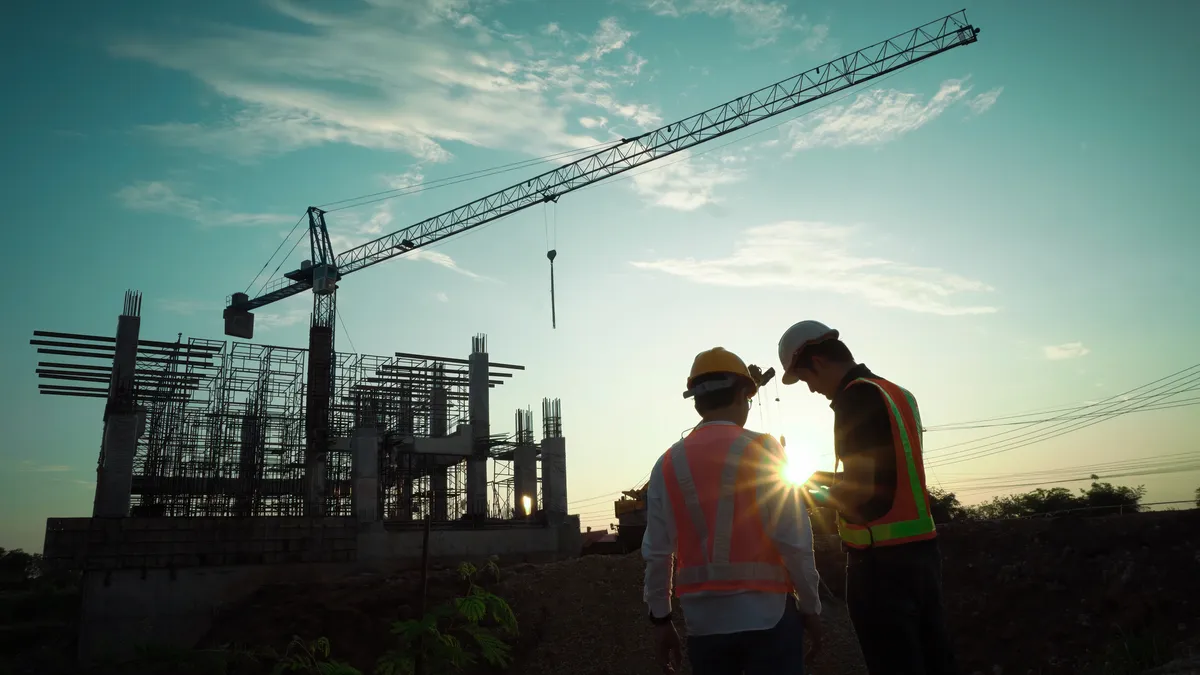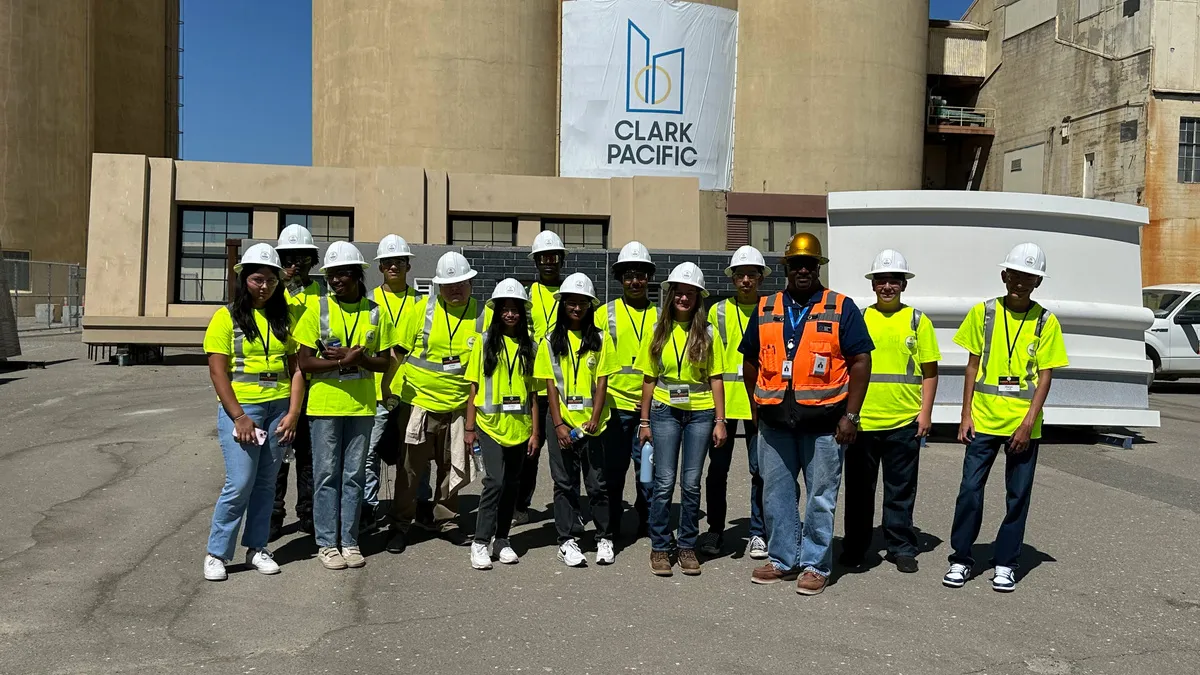This article is part of Construction Dive's 50 States of Construction series, in which we talk with industry leaders about the business conditions in their markets.
Like many other U.S. states, Oregon has a booming construction market. Mike Salsgiver, executive director of the Associated General Contractors' Oregon-Columbia chapter, told Construction Dive that during the depths of the Great Recession, 43% of local construction workers were unemployed. Now, he said, with the industry at record employment levels, companies cannot find enough workers to fill their payrolls.
And more major construction projects could be on the way. There’s a possibility that the region will see a $42 billion high-speed rail system. Tech companies like Intel and Facebook are building and expanding data centers there, and the state was the first to adopt mass timber codes for tall buildings, which could lead to a wave of commercial wood construction.
However, the state’s construction industry, Salsgiver said, is facing some challenges. For one, the state's pension fund could siphon off any surplus revenue public coffers manage to generate. Another sticky issue is that the state's relaxed marijuana legislation has made it difficult for contractors to enforce no-tolerance rules. But ultimately, Salsgiver warned that the state must address some big fiscal issues to keep the engine running strong.
This interview has been edited for clarity and brevity.
CONSTRUCTION DIVE: What is the most pressing issue facing the construction industry in Oregon right now?
SALSGIVER: I think, ultimately, the fiscal structure of the state is the single biggest issue that affects this industry. The downturn was deep, broad and wide and wiped out about a third of our industry. It’s recovered, but the structure of the industry is different. I wouldn't [characterize the industry as] fragile, but it would be easy to knock off balance. We can’t grow unless the economy grows, and Oregon is facing a very serious fiscal crisis.
What’s driving the crisis?
SALSGIVER: The Public Employees Retirement System (PERS) is completely under water. We are a fairly small state, and our biennial budget is around $16 billion. But, right now, we are bringing in about $1.5 billion more than we were forecasting, and we’re still $3 billion [short]. Virtually any new spending is going toward helping state agencies pay their PERS obligations.
Does that mean that no new money will be earmarked for infrastructure or other programs that could benefit the construction industry?
SALSGIVER: [No new money] for anything. The state just gave about $660 million to K-12 [education development], and almost all of it went to PERS. The state needs an additional $2 billion to $3 billion every biennium for the next 20 years to fix the problem. So that, to me, is the biggest challenge right now because it ripples through to the rest of the economy.
Oregon, in my judgment, has created an inverted pyramid, standing on its tip, where the state is supporting a lot of people who are receiving benefits, and there are not enough people who are generating revenue to pay for the benefits. It wouldn't take much to tip it over.
How do you think Oregon’s construction industry would be affected if the state budget "tips?"
SALSGIVER: I think the immediate impact is that you would begin to see programs that are currently underfunded literally wither on the vine. We're already seeing disinvestment in our universities. We don't have the ability to purchase the infrastructure, modifications and modernizations that we need to do. So the infrastructure would begin to further fail.
The financial posture of the state would be such that you couldn't get adequate bonding to do things. It would become a place where owners who, on the private investment side, would look at it and say, "No infrastructure. No education system. The cost of resources, water, electricity, sewers, etc. is going up. They're talking about continuing to raise taxes to find revenue to pay for things.” So it's no longer an attractive investment climate.
Also, we have a workers’ compensation system that is first in the nation … and it has yielded tremendous safety results for workers and financial stability for employers, as we’ve seen rates continue to drop [since reforms were made in 1998].
It’s still overseen by the legislature and the governor but run as a private corporation. It has one line of business, which is workers’ compensation insurance. They have a mandated reserve they have to maintain to pay for claims that, in some cases, are still being paid from the 1950s. The governor, because of this financial crisis, is talking about raiding that reserve to help pay down the state’s debt. That [would be] a direct assault on worker safety, on the viability of the construction workforce — a very, very bad thing for the people who actually work with their hands.
Oregon has a thriving construction industry, despite the potential threats. What are some of the positives?
SALSGIVER: The construction pipeline on the building side is full for 2019 for most companies. In addition, projects financed by a $5.3 billion, 10-year transportation bill back in 2017 should start rolling out this year. Also, construction wages continue to grow, and there is plenty of work out there for young people or folks looking to make a career change.
Oregon was one of the first states to decriminalize the use of cannabis for adults. Has marijuana use affected contractors and their ability to grow their workforces?
SALSGIVER: Yes. Right now, the [new hire testing] failure rate is in the 70% to 80% range. What's been interesting to me is that the skilled worker gap is so substantial now that companies that typically have no tolerance for any kind of accommodation are saying, "Okay. You failed your test. Go, get clean and then come back, and we'll take you.”
We actively oppose [any legislation] that would require companies to accommodate people who have tested positive for use. The issue for us is safety. You have no way to determine impairment. As technology improves and the testing that allows you to determine a threshold for impairment becomes available, that's where you'll see construction figure out how to work with that.
Oregon is also a pioneer in developing mass timber tall building codes allowing wood buildings taller than six stories without a special review process. How has that impacted commercial construction in the state?
SALSGIVER: Is it widely adopted? No. It's being tested, and it’s just now beginning to come to market. At Oregon State University, the College of Forestry is rebuilding its major buildings, and they're using [mass timber] to do that.
There's discussion about building 8-story or 10-story buildings using mass timber, but it is nowhere near making a real dent in [commercial] construction. At this juncture, I would say the people in the industry look at it and ask if it’s viable. Is there an owner demand for it? What are its safety components? What are its costs? I would characterize it more as an experiment than a real movement. It opens an avenue for an alternative construction material but right now, I don't read too much more into it than that.
What is the local industry take on the possibility of a Vancouver-to-Portland high-speed rail line?
SALSGIVER: There’s not much excitement about that. Part of it comes from looking at how the new governor of California ramped down the San Francisco to Los Angeles bullet train.
What if Canada is willing to provide significant financial backing?
SALSGIVER: [Canada] could be, but the United States is not. We have a congestion problem, not because we don't have high-speed rail, not because we don't have light rail, not because we don't have commuter trains, but because the region has grown too fast for the transportation infrastructure that we do have. We're trying to shove too much into a small pipe. Congestion has overtaken us.
So, I think the focus is going to be basic maintenance, some modernization of the existing highways and bridge systems. And, high-speed rail, while attractive and a great dream to have — it's not a high priority in this region. As cool as it would be and as much as I would love to see it, I don't see it evolving anytime soon.


















